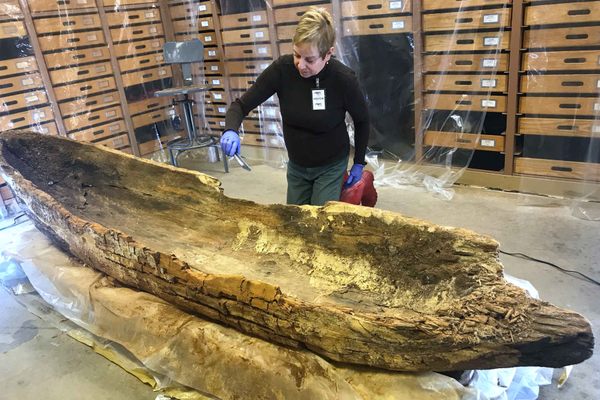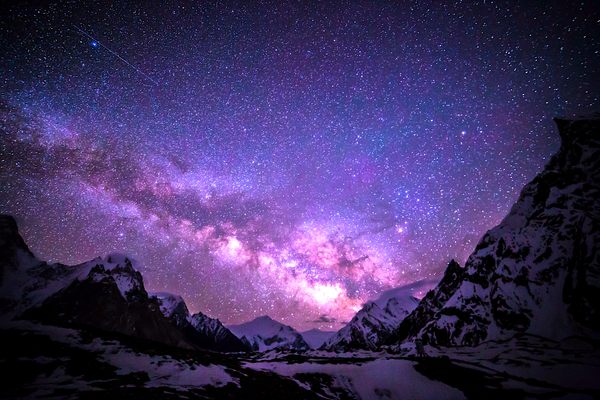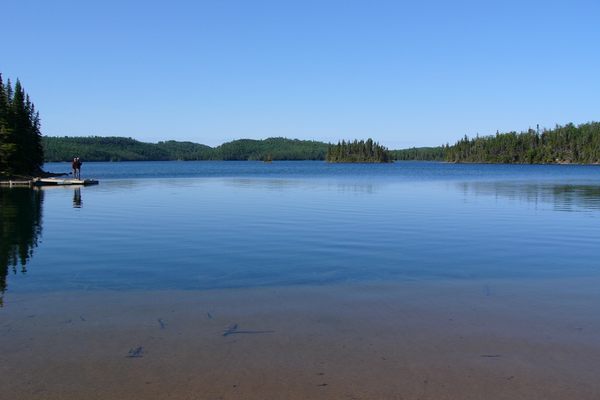Nevada’s Extraterrestrial Highway Is Full of Earthly Wonders, Too
Explore a catastrophic space rock strike, unique flora and fauna, and millennia-old rock art on this famous stretch of desert road.
The Extraterrestrial Highway, also known as Nevada State Route 375, cuts through nearly a hundred miles of lonely desert and borders the mysterious military base known as Area 51. The road has become a pilgrimage for those in search of signs of government conspiracies and life from other solar systems. But those who traverse this desolate land looking for aliens will miss the wonderful weirdness of its otherworldly geology, millennia-long human history, and uniquely adapted species. It’s worth seeking out close encounters with the terrestrial oddities and wild wonders of Route 375.
Driving Through an Interstellar Impact Event
Leif Tapanila, paleontologist and director of the Idaho Museum of Natural History, has spent years studying the area’s desert, craggy hills, and mountain peaks of tan and brown. He can read the rocks like the pages of a tattered novel, and says visitors driving the Extraterrestrial Highway looking for evidence of alien invaders are surrounded by it—only they’re about 380 million years too late.
The best place to see evidence of what Nevada was like during this period is about 13 miles west of the town of Crystal Springs, where an unmarked turnoff takes you about a quarter-mile to the base of a wedge-shaped hill. Here, tilted layers of pale limestone are interrupted by a thicker gray section, the telltale pattern of a marine environment disrupted by a catastrophic event.

“The whole area was a shallow sea. It would have looked like the Bahamas, warm and tropical with all sorts of underwater life,” says Tapanila. In an instant, a space rock estimated to be at least a mile wide slammed into the teeming waters of Nevada’s Devonian Period. The massive meteor strike sent shockwaves across the sea, creating megatsunamis as tall as 1,000 feet. Geologists estimate that the monstrous waves carried debris across 1,500 square miles, an expanse nearly the size of Rhode Island.
The destructive event, known as the Alamo Impact, scattered countless organisms and tons of sediment. The rocks along Route 375 contain fossilized sponges, corals, fish, and a cement-like rock conglomerate known as breccia that formed from the heat of the impact. These fossils and rocks are all that remain of the event; the ancient crater has eroded and been buried beneath younger rocks in the shifting landscape of a changing planet.
Species Stranger than Science Fiction
Along the E.T. Highway, strange trees with spindly silhouettes stand out, literally, in the otherwise low-growing desert flora. The Joshua tree is, says Willamette University evolutionary ecologist Chris Smith, “a tree that a little kid would draw, with long arms twisting in every direction.” Smith, an expert on these desert dwellers, says the trees have adapted in remarkable ways to their environment.
For example, Smith says, Joshua trees grow slowly and produce large flowers that resemble “big ostrich eggs” and smell like “chanterelle mushrooms or rotting cantaloupe.” This pungent perfume draws the attention of female Yucca moths. Once in contact with the flower, the inch-long, ghostly white insect unfurls a unique pair of tentacles. The moth uses them to jam pollen deep into the flowers and then lays its eggs within the plant’s tissues, ensuring the next generation of both species.

Yucca moth larvae feed on some of the Joshua tree’s developing seeds but eventually fall from the flower and burrow into the warm sand. The insects enter a deep sleep of sorts called diapause, which can last months to years. It’s unclear what awakens these cocooned dreamers, but Smith once left beakers of burrowed Yucca moth larvae from a wayward experiment in a refrigerator for years. “We moved the larvae out of the fridge and then forgot about them. Weeks later, Yucca moths were flying around the lab,” says Smith.
Unexpected Oases
At the northwest junction of the Extraterrestrial Highway and US 6, dilapidated ruins are all that remain of the ghost town of Warm Springs. An emerald green pool of near-boiling thermal spring water gleams from behind the decaying Warm Springs Bar and Grill, abandoned half a century ago. The white mineral deposits mark the water’s path down a small hill, where it collects in a pool. The site is private property and swimming is prohibited, but the spring can be viewed from the roadside.
Nevada has hundreds of these natural hot springs, including in the town of Crystal Springs, on the eastern end of Highway 375. It was once a stop along an alternative route of the Mormon Trail. Tall trees and lush greenery entice migratory birds to find respite from the heat at the nearby Key Pittman Wildlife Management Area. Some species, such as the endangered Southwestern willow flycatcher, travel thousands of miles each spring to touch down at this seasonal desert sanctuary.

Signs From Those Who Came Before
Humans lived in this arid environment long before the advent of paved roads, air-conditioning, and sci-fi blockbusters. Indigenous people, likely ancestors of the Paiutes and Shoshones, used stone tools to chip away the desert patina of boulders and canyon walls to create intricate rock art. The drawings, known as petroglyphs, are found throughout the region; the oldest are about 4,000 years old, while the most recent date to the 19th century.
The Mount Irish Archeological Site to the north contains some of the most expressive and well preserved petroglyphs in the area, including a recurring, mysterious figure known as Pahranagat Man. Archaeologists consider the Pahranagat Man petroglyphs to be anthropomorphs, or depictions of humans—but its rounded head, circular eyes, and spindly fingers have led some enthusiasts to believe that the figure might depict an extraterrestrial tourist. Another nearby petroglyph resembles a domed flying saucer and has some people claiming the truth is out there, drawn on the stones. Whether or not you want to believe, the area offers a quiet place to reflect on the people and events that left their mark along the Extraterrestrial Highway.

















































Follow us on Twitter to get the latest on the world's hidden wonders.
Like us on Facebook to get the latest on the world's hidden wonders.
Follow us on Twitter Like us on Facebook